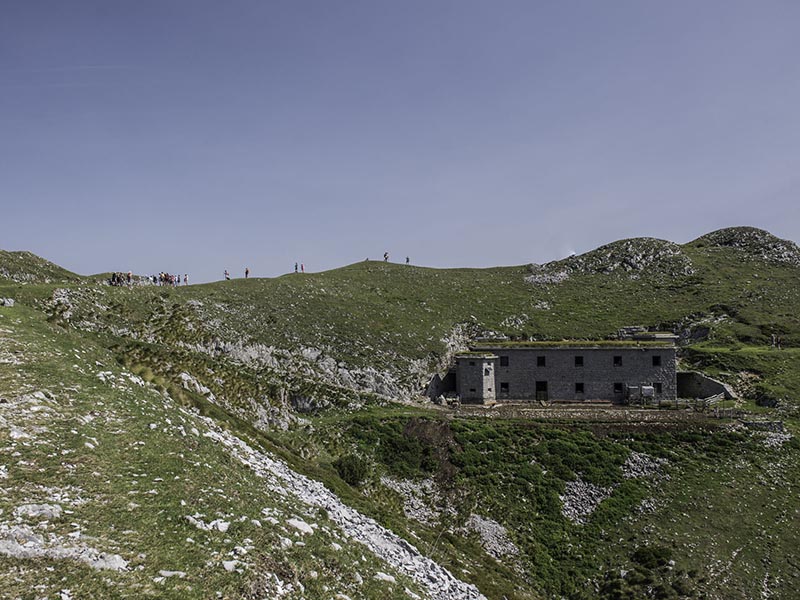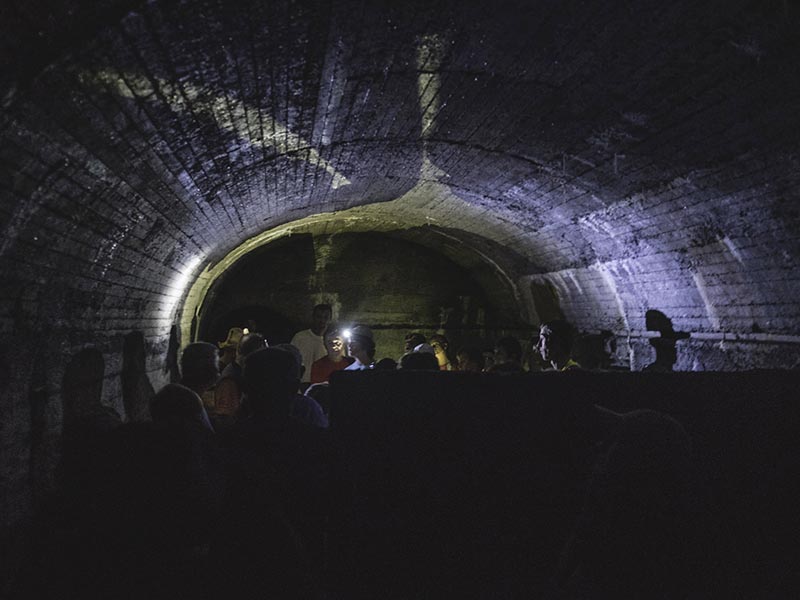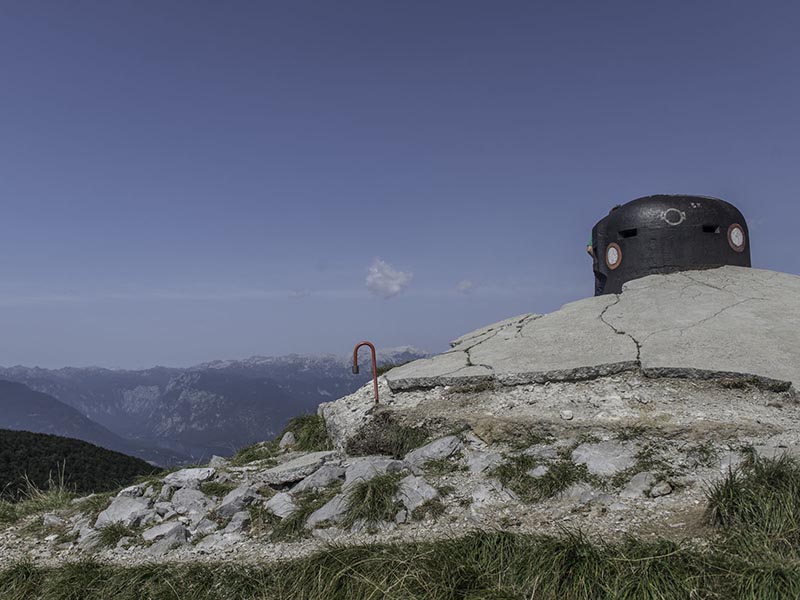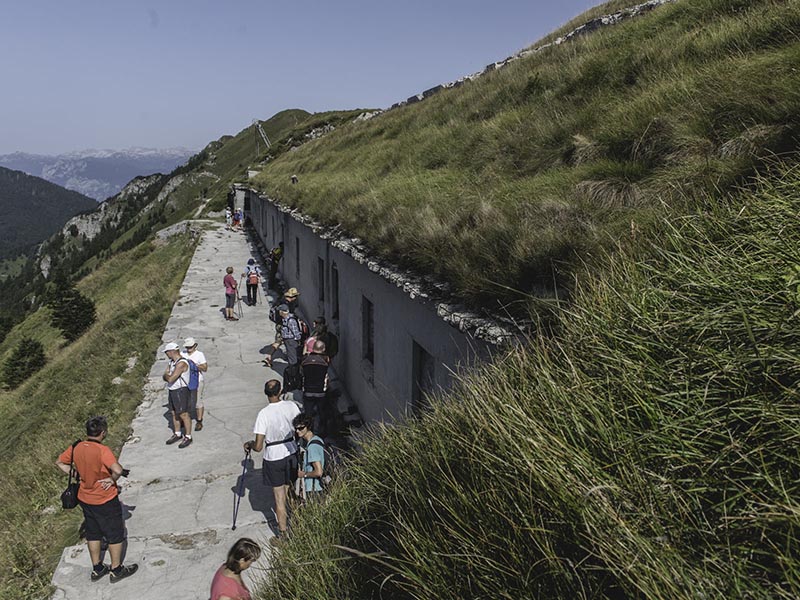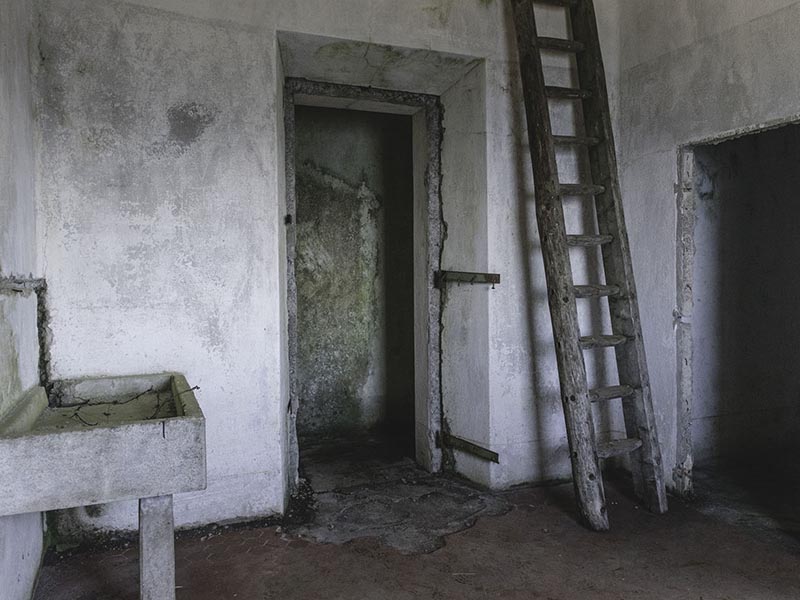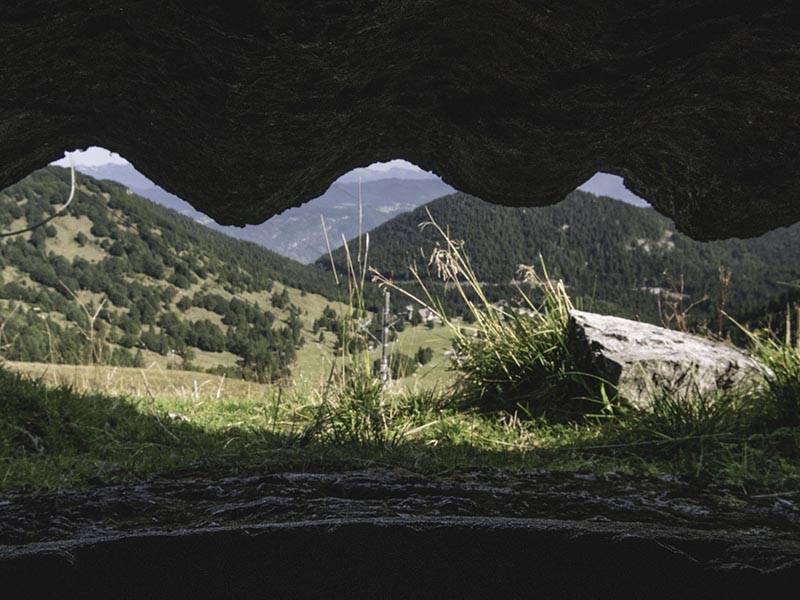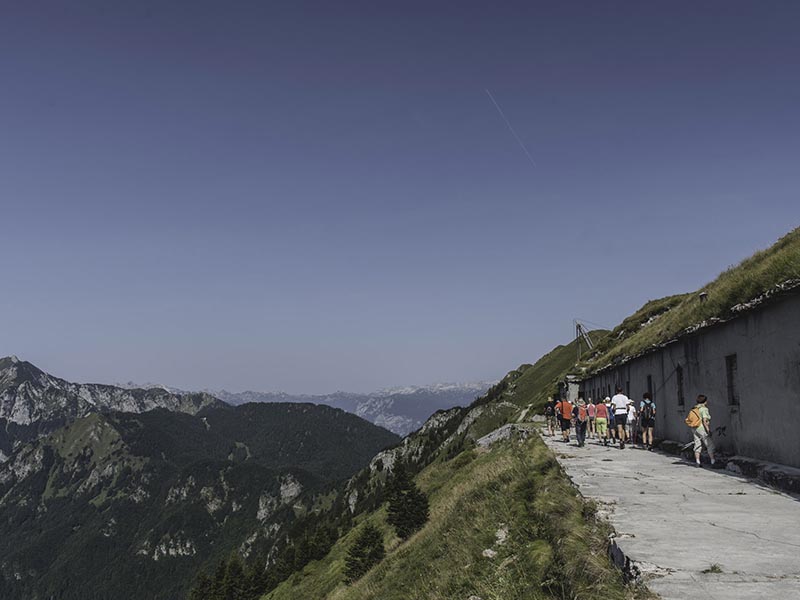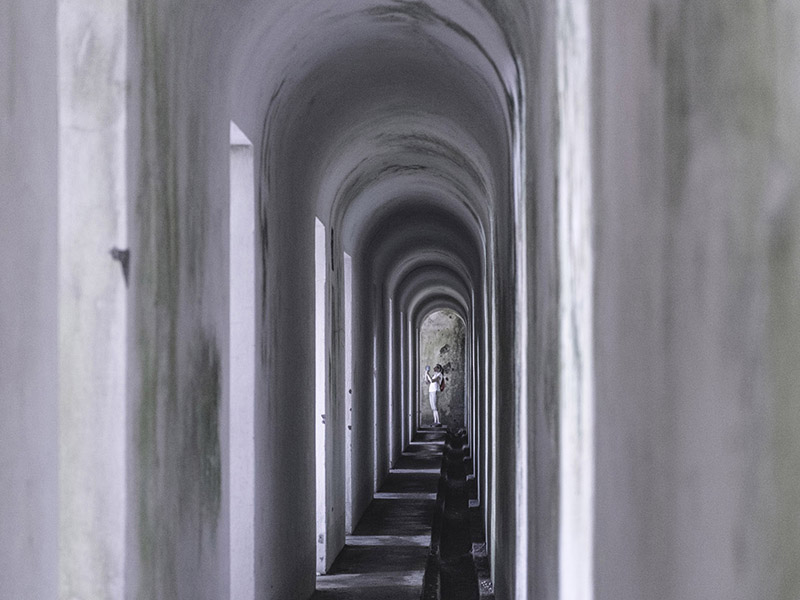Theme tourist path
Over the peaks of the Soriška planina highland once ran the old border – the Rapallo border, which marked the lives of the locals and cut nearly a third of Slovenians from their motherland. On the theme tourist trail you can have a look at many remains of the Italian defensive fort system – the Alpine wall, well-preserved barracks, a mule track and an observation dome.
Only a week or so after the end of the Great War and the signing of the cease-fire between the Austro-Hungarian Empire and Italy (4 November 1918), the first Italian soldiers settled in the Upper Bača Valley and the neighbouring Sorica community. Without any resistance whatsoever, they occupied the majority Slovenian territory and stayed there until the capitulation of Italy in 1943. But the border between the Kingdom of Italy and the newly founded Kingdom of SHS (Kingdom of Serbs, Croats and Slovenes) was finalized more than two years later (12 November 1920), when the long awaited peace treaty was signed in the Italian city of Rapallo following lengthy negotiations. The towns on the Primorska side or in the valley of the river Bača thus went to Italy, while Sorica and the surrounding villages were annexed to the Kingdom of SHS.
DIFFERENT TIMES or HE MAY AS WELL GO INTO SMUGGLING
In the year following the final decision regarding the border, the new borderline, which ran across the watershed east of Podbrdo or across the peaks, which have always represented the natural barrier between the coastal and the continental region, was marked by concrete boundary stones in three sizes, which still stand in some places. This severely changed the life of the people along the newly-built border, but nothing could break the hundred-year-old links. Economic and increasingly aggravated political situations forced the people to adapt and be resourceful, which was reflected particularly by the expansion of smuggling. In the years between the two world wars, this dangerous but profitable illegal activity enabled many border families to survive and improve their standard of living.

